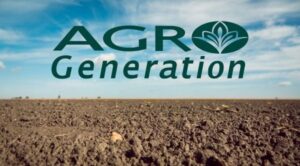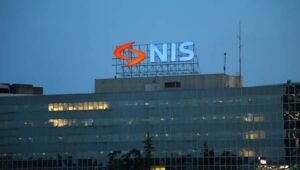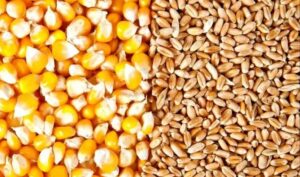
Astarta, Ukraine’s largest sugar producer, earned EUR43.70 million in net profit in January-September 2025, down 42.2% from the same period last year.
As noted in the company’s report to the Warsaw Stock Exchange, net profit in the third quarter of this year amounted to EUR 1.43 million, which is 20 times less than in the third quarter of last year.
According to the document, Astarta’s revenue for the nine months decreased by 22.4% to EUR342.78 million, although in the third quarter, compared to the same period last year, the decrease was only 3.8% to EUR116.16 million.
At the same time, due to the increase in production costs and a smaller increase in the net value of biological assets, gross profit for the nine months decreased by 34.2% to EUR121.05 million, while in the third quarter, it fell by 48.8% to EUR29.34 million.
As a result, EBITDA for the nine months amounted to EUR101.46 million, which is 22.9% less than for the nine months of last year.
Astarta specified that, excluding the impact of IAS41, the gross margin was 33% (-4 p.p. year-on-year), while the EBITDA margin even increased by 3 p.p. to 28%.
It is also noted that operating cash flow for the period decreased 3.6 times compared to the same period last year, to EUR 37.41 million, mainly due to the previous reduction in inventories, while investment cash flow doubled compared to the same period last year, to EUR75.44 million, with the largest investments made in the soybean processing and agriculture segments.
According to the published data, the main source of income for the agricultural holding in the reporting period was agriculture, which provided 33% of this income, or EUR112 million (-23% compared to the same period last year).
Sugar production accounted for 32% of Astarta’s revenue, or EUR 108 million (-36% compared to the same period last year).
Revenue from soybean processing remained stable at EUR 77 million, accounting for 22% of Astarta’s consolidated revenue. Revenue from livestock farming increased by 14% compared to the same period last year, reaching EUR 42 million, or 12% of total sales for the nine months of 2025.
Export revenue amounted to EUR 218 million, or 63% of sales.
Astarta is a vertically integrated agro-industrial holding operating in eight regions of Ukraine and the largest sugar producer in Ukraine. It comprises six sugar factories, agricultural enterprises with a land bank of 220,000 hectares, dairy farms with 22,000 head of cattle, an oil extraction plant in Globino (Poltava region), seven elevators, and a biogas complex.
In the first half of 2025, Astarta reduced its net profit by 10.3% to EUR47.11 million, while its consolidated revenue fell by 29.3% to EUR320.71 million.
On June 12 this year, the shareholders’ meeting approved the payment of dividends for 2024 in the amount of EUR0.5 per share for a total of EUR12.5 million, which is in line with the figures for the previous two years.

The Antimonopoly Committee of Ukraine (AMCU) has allowed ADP-Agro LLC (Lozivsky district, Kharkiv region) to acquire one of the enterprises belonging to the AgroGeneration agricultural holding, Podolivska LLC (Izyumsky district, Kharkiv region), according to the press service of the agency.
“ADP-Agro LLC has been granted permission to acquire direct control over Podolivska LLC,” the statement said.
According to data from the Opendatabot service, Podolivska LLC specializes in growing grains, oilseeds, and perennial crops. The company’s founder is Agrarian Company Agronova Ukraine LLC (owned by AgroGeneration). The ultimate beneficiary of Podolivska Agricultural Farm LLC is Serhiy Polumysny, a member of the board of AgroGeneration, which represents Novaagro.
ADP-Agro LLC grows grain, oilseed, and perennial crops and is owned by Oleksandr Katsuba, former deputy head of Naftogaz.
AgroGeneration was founded in 2007. Before the war, it owned a land bank of 56,000 hectares located in the Lviv, Kharkiv, and Sumy regions. Currently, according to various estimates, it farms 30,000 hectares. The company specializes in growing grain and oil crops. In 2024, NovaAgro acquired 56.90% of AgroGeneration’s share capital and voting rights. In 2025, the AMCU approved this deal.

Astarta, Ukraine’s largest sugar producer, reduced revenue from sales of its key products by 22% to EUR343 million in January-September 2025 compared to the same period in 2024.
According to data published by the holding on the Warsaw Stock Exchange, the main source of income for the agricultural holding in the reporting period was agriculture, which provided 33% of this income, or EUR112 million (-23% compared to the same period last year).
Sugar production accounted for 32% of Astarta’s revenue, or EUR 108 million (-36% compared to the same period last year).
Revenue from soybean processing remained stable at EUR77 million, accounting for 22% of Astarta’s consolidated revenue. Revenue from livestock farming increased by 14% compared to the same period last year to EUR42 million, or 12% of total sales for the first nine months of 2025.
Export revenue amounted to EUR218 million, or 63% of sales.
Gross profit amounted to EUR121 million (-34% year-on-year) with a corresponding gross margin, which decreased to 35% compared to 42% in 2024.
EBITDA amounted to EUR101 million, down 23% year-on-year, with EBITDA margin stable at 30%.
Excluding the impact of IAS41, gross margin was 33% (-4 p.p. year-on-year) and EBITDA margin was 28% for the first nine months of 2025.
Astarta is a vertically integrated agro-industrial holding operating in eight regions of Ukraine and the largest sugar producer in Ukraine. It comprises six sugar factories, agricultural enterprises with a land bank of 220,000 hectares and dairy farms with 22,000 head of cattle, an oil extraction plant in Hlobyn (Poltava region), seven elevators, and a biogas complex.
In the first half of 2025, Astarta reduced its net profit by 10.3% to EUR47.11 million, and its consolidated revenue decreased by 29.3% to EUR320.71 million.
On June 12 this year, the shareholders’ meeting approved the payment of dividends for 2024 in the amount of EUR0.5 per share for a total of EUR12.5 million, which is in line with the figures for the previous two years.

According to Serbian Economist, Naftna industrija Srbije (NIS) is considering the possible sale of a controlling stake (56.15%) to the Russian side of ADNOC from the United Arab Emirates.
According to the publication, there has been no official confirmation from either the Russian side or ADNOC. However, experts believe that the option of selling to an “Arab player” is the most likely and logical. Among other contenders mentioned is the Hungarian MOL Group.
The head of the Serbian parliament’s energy committee, Milun Babic, pointed out that a deal with an Arab investor is preferable to the risk of supply blockages due to sanctions, but he said that the best option would be to transfer management to the Russian side for 20 years. “Selling to the Arabs is a possible option… but it is not ideal,” he said.
Serbian President Aleksandar Vučić, in turn, confirmed that Russia is negotiating the sale of the NIS stake to three investors and that the Serbian side will not be able to exercise its right of first refusal.
If the deal goes through, experts see the following possible consequences for Serbia:
1) increased investment in the modernization of the oil industry, including possible expansion of production and logistics in the region;
2) increased geopolitical independence from Russian assets and reduced risk of sanctions;
3) strengthening of the country’s role as an energy hub in the Balkans.
According to expert Branimir Jovanovic, the new investor could export oil from Serbia and the region or invest in the modernization of the refinery in Pančevo.
Naftna industrija Srbije (NIS) is Serbia’s largest oil and gas company, controlled by Russia’s Gazprom Neft. The company’s authorized capital and strategic importance make it a key element of the country’s energy sector. The transfer of shares will affect Serbia’s future management, investments, and international relations.
Source: https://t.me/relocationrs/1793

As of November 21, farmers harvested 50.93 million tons of grains and legumes from 10.23 million hectares, which is 88% of the area sown with these crops, the Ministry of Economy, Environment, and Agriculture reported on its website on Friday.
Last year, 53.4 million tons of grain and 19.5 million tons of oilseeds were harvested on the same date, meaning that this year’s figures are 4.6% and 12.6% lower, respectively, mainly due to the later start of the corn harvest.
As noted by the Ministry of Economy, 20.84 million tons of corn have been harvested from 3.12 million hectares, while last year at approximately the same date, 23.6 million tons were harvested from 3.7 million hectares.
As for wheat, its harvest is slightly higher than last year’s – 22.96 million tons from 5.05 million hectares compared to 22.40 million tons from 4.9 million hectares, while barley is slightly lower – 5.42 million tons from 1.36 million hectares compared to 5.6 million tons from 1.41 million hectares a year ago.
This year’s pea harvest is significantly higher – 672,500 tons from 275,100 hectares compared to 469,000 tons from 212,300 hectares last year, while buckwheat and millet are still significantly lower – 82,400 tons versus 131,700 tons and 62,100 tons versus 161,300 tons, respectively.
The harvest of other cereals and legumes this year reached 896.5 thousand tons from 327.6 thousand hectares as of November 21, compared to 1 million tons last year.
It is noted that among the leaders are Chernihiv region – 4.57 million tons, Khmelnytskyi – 4.89 million tons, Vinnytsia – 4.62 million tons, Odesa – 4.06 million tons.
As for oilseeds, their harvest as of November 21 is 17.05 million tons. In total, 92% of the sown area has been harvested for sunflowers and 96% for soybeans. The rapeseed harvest has been completed, and it turned out to be only slightly less than last year’s – 3.31 million tons compared to 3.5 million tons from almost the same area – about 1.3 million hectares.
However, there is a significant lag in the harvesting of soybeans and sunflowers, which is still ongoing: 4.72 million tons of soybeans have been harvested from 1.99 million hectares, compared to 6 million tons from 2.6 million hectares on the same date last year, while sunflower seeds – 8.92 million tons from 4.79 million hectares compared to 10.1 million tons from 4.9 million hectares.
In addition, sugar beet harvesting is also lagging behind: 94% of the production area has been harvested, yielding 9.96 million tons from 186,000 hectares, compared to 12 million tons from 251,200 hectares a year ago.
In its October inflation report, the National Bank of Ukraine increased its estimate of the grain and legume harvest in 2025 to 61.5 million tons from 57.9 million tons in the July report, while lowering its estimate of the oilseed harvest to 19.3 million tons from 21.0 million tons.
The NBU recalled that last year, the grain harvest in Ukraine fell to 56.2 million tons from 59.8 million tons in 2023, and oilseeds – from 21.7 million tons to 20 million tons.

In September 2025, Express Insurance settled insurance claims under comprehensive insurance policies in Austria, Belgium, Bulgaria, Great Britain, Spain, Italy, Moldova, Germany, Poland, Romania, Turkey, Hungary, France, Croatia, the Czech Republic, and Switzerland for a total amount of UAH 4.7 million, according to the insurer’s website.
In particular, in Turkey, sudden braking on the highway led to losses of more than UAH 740,000, compensation for a careless maneuver in France amounted to UAH 528,000, and the sudden appearance of a wild boar on an evening highway in Spain amounted to more than UAH 351,000.
A payment of UAH 284,000 was made for damage to a car while parking in Croatia, and UAH 119,000 for an unnoticed obstacle in Austria when driving into an underground bumper.
Express Insurance LLC was founded in 2008 with the participation of Ukravto Group.
The company is represented in more than 60 points of sale throughout Ukraine and is actively expanding its network of partner service stations. Today, the number of service station partners exceeds 100.